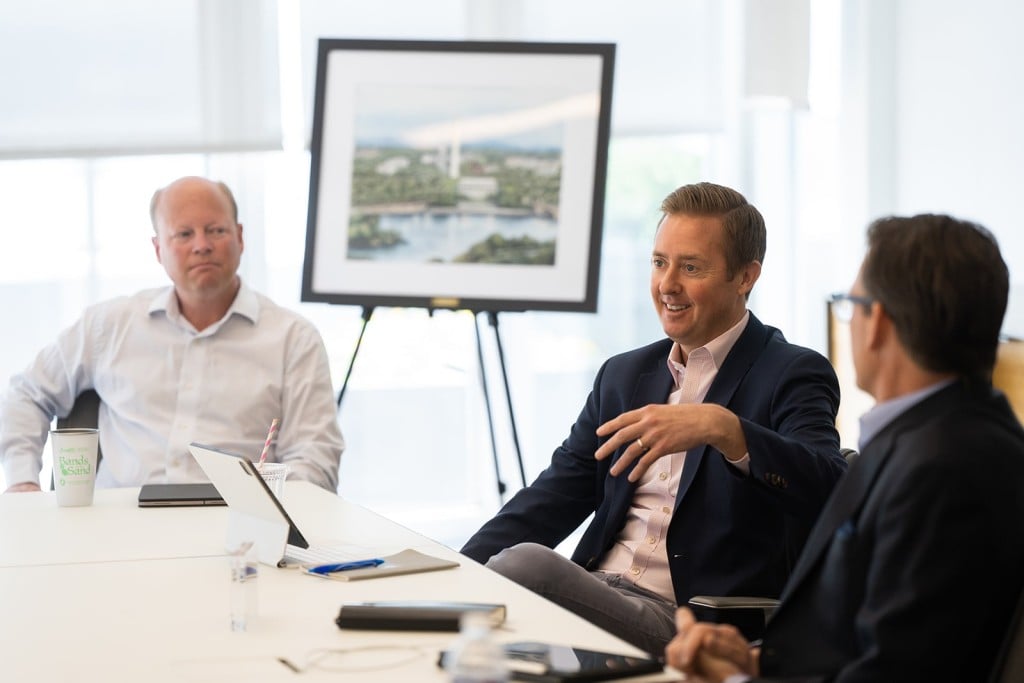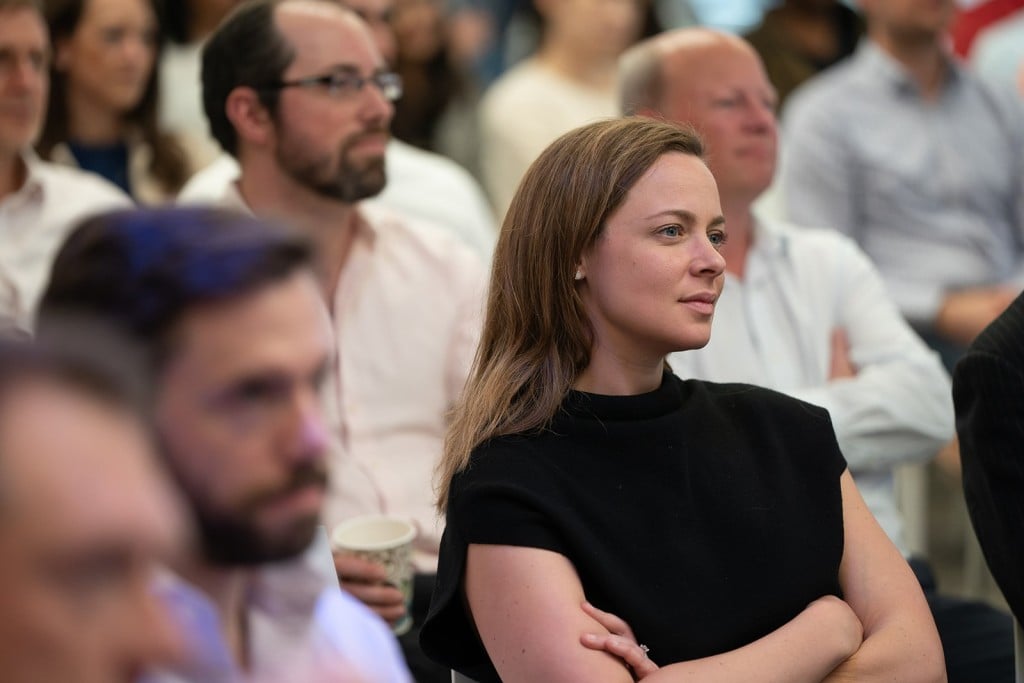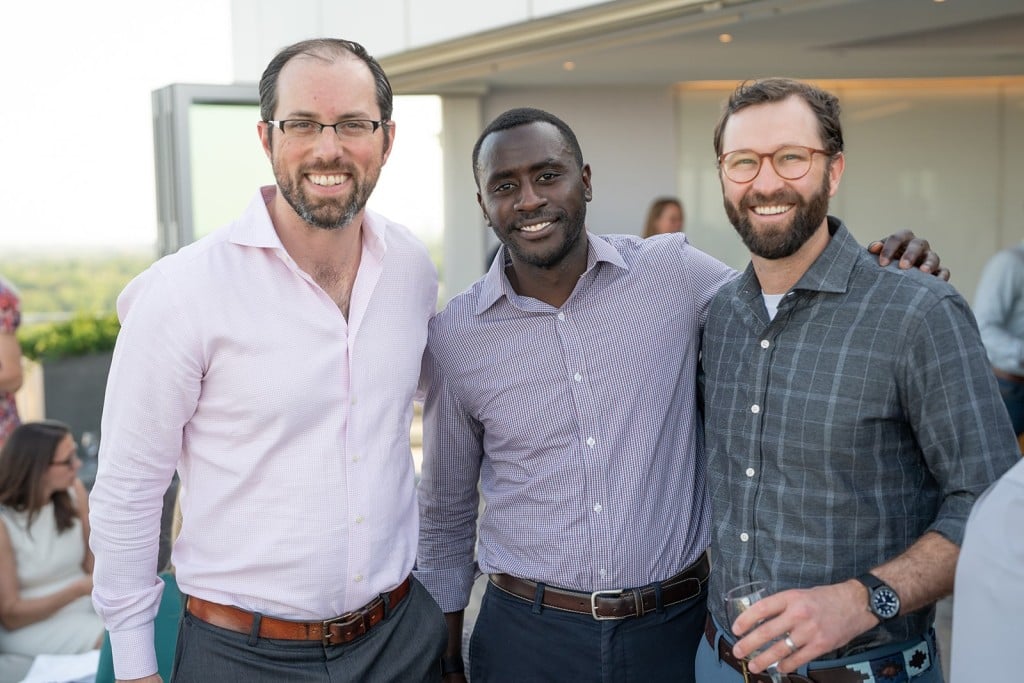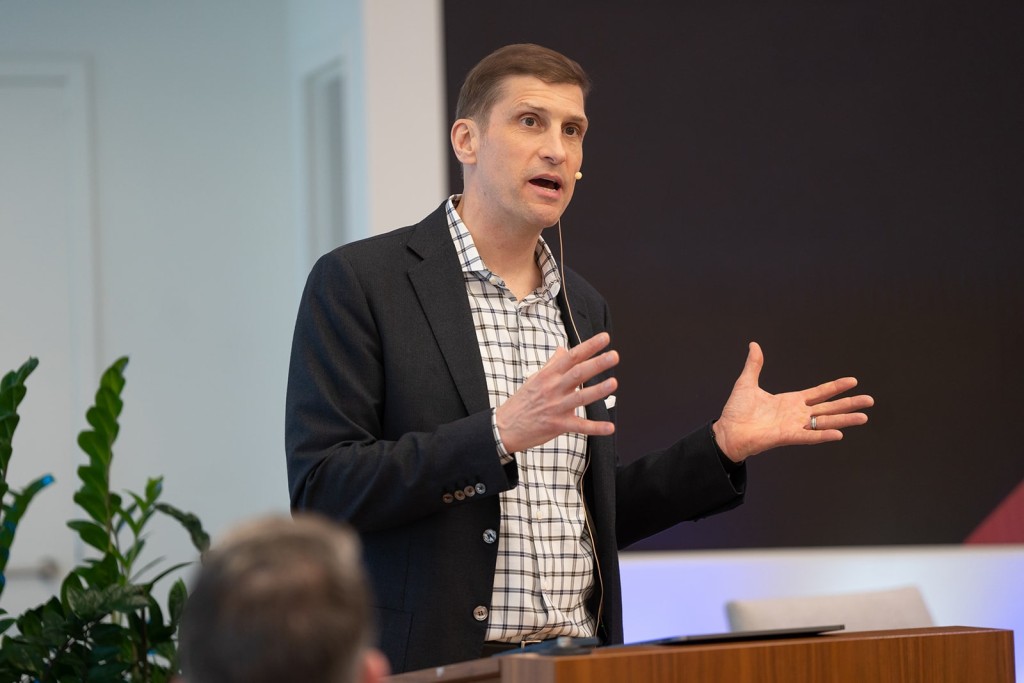Contributors
Related Articles
Stay Up To Date
Something has gone wrong, check that all fields have been filled in correctly. If you have adblock, disable it.
The form was sent successfully
Technological transformation often breeds bubbles. Sr. Portfolio Manager Thomas H. Trentman, CFA, discusses how investors can best read the signposts.
Transcript
Framing the AI Debate
Jack Mayer: I’m Jack Mayer, director of the portfolio specialist team at Sands Capital, and today I’m joined by Tom Trentman, who’s a senior portfolio manager and research analyst. Tom has been leading a lot of research around navigating the artificial intelligence (AI) cycle. So Tom, let’s start with the question that’s on everyone’s mind: are we in a bubble?
Balancing Excitement and Risk in the AI Cycle
Tom Trentman: It’s a great question. We think, as investors, we keep two things in our mind at the same time.
One is that AI is a paradigm shift in tech. These are pretty infrequent, and they have a dramatic impact on the world, especially over the next five to 10 years. On the flip side, excitement like that often does lead to a bubble. We’ve certainly seen strong stock performance from AI broadly over the last few years. There is increasing excitement around it, and there’s certainly a lot more “Hey, we’re in a bubble” talk from commentators.
We’re keeping track of signposts, of the positives and the negatives, and trying to keep a balanced view of this. You neither want to write off a transformational change because it’s a bubble when you shouldn’t, and you also certainly don’t want to overstay your welcome and ride off the cliff when it is.
Our view at this point is that there’s pretty decent balance. We don’t think we’re at the peak. But our eyes are wide open, and our focus is really trying to deliver returns through the cycle no matter what happens. Whether AI is going to continue to drive five years up in a straight line, or whether in a year from now it’s going to roll over and crash, we need to deliver positive relative investment results no matter what.
Managing Opportunity and Capital Risk
Jack Mayer: We’re not market timers at Sands Capital, but it sounds like you’re trying to manage these two risks: one of opportunity cost, and the other of capital destruction. How do you manage through this whole cycle without trying to call a top or a bottom?
Tom Trentman: If we look at the exposure in AI, you’re trying to minimize the opportunity cost and maximize the value you’re going to create from the transformation, then you’re looking for more and more derivative plays.
If NVIDIA is going to be the architectural leader and do well, but it’s a four-plus trillion-dollar company, maybe it’ll double on you, maybe it’ll triple. But it’s not going to 10x on you, most likely, at least not in our view. Whereas if you find something more speculative that goes from zero to one, in this context, you get much bigger returns.
On the flip side, that zero to one transformation can go back to zero pretty easily if you’ve got the timing wrong on the cycle. We’re thinking about owning, in our parlance, haystacks in AI. These are the obvious companies that are incredibly well positioned. They may not be some undiscovered gem no one’s ever heard of, but they’re incredibly well positioned for the core of AI, and they are stronger, more stable businesses because of it.
You neither want to write off a transformational change because it’s a bubble when you shouldn’t, and you also certainly don’t want to overstay your welcome and ride off the cliff when it is.
Even within the AI exposure, that’s where our investments are. We don’t think we need to reach for more return with the speculative companies that add to the risk of timing the cycle. And we also need a portfolio that’s not all AI. AI is, depending on how you calculate it, about 60 percent of the portfolio. We’ve got another 40. We need that to be value-generative, diversifying. As we think about what we would do if we become more worried we’re at an extreme, which again it’s highly likely, we think there are some warning signs.
We don’t think we’re at an extreme yet. But a year from now, six months from now, could we be? For sure. We need a robust set of new opportunities that we can move the portfolio in that direction. We’re not going to wake up one day and be like, “This is the top, and sell everything.”
There may be folks who can do that; it’s not a muscle we have at Sands Capital. We need to be moving in the right direction over time based on the opportunities we’re seeing in the market today and move the portfolio in the direction that’s most promising for the next five years. Understanding that we’re not going to get timing right, you can’t call exactly what’s going to happen.
Assessing Circularity in AI Financing
Jack Mayer: Let’s talk about one risk that’s garnered many headlines as of October 2025. This concept of circularity in financing for the AI ecosystem. What is your view of this, and what state would you say we’re at in terms of the AI capital expenditures cycle?
Tom Trentman: This goes back to the ‘90s, when there was a lot of vendor financing. You were lending the money to your customers who were buying, and when the music stopped, the customers went under, and you never got your revenue.
That’s why it’s a warning sign. On the flip side, what is NVIDIA to do with the tens of billions of dollars of free cash flow it has? If you believe in AI, maybe you do want to invest more broadly in the ecosystem. That makes rational sense for them. They’re getting paid in cash; they’re not actually financing. Maybe they’re providing some of the capital that allows it, but it’s not like they’re not going to get paid if something happens. They’ve already been paid for everything they’ve sold. I would put it in the category of a warning sign.
I would also say going back to “are we in a bubble,” the fact that the market is so concerned about this, and that there is a lot of data and concern over NVIDIA’s deal with OpenAI, that’s the circularity. Capital has to be raised. How is it going to be financed? Is OpenAI, which is a private company with negative free cash flow, going to be able to pay for all this? All that skepticism and concern is also a sign that to us the possibility of being at an extreme is lower. If all that was happening and everyone was super excited and everything was going to the moon, that’d be much more of a warning sign than if the market is actually concerned about it and not giving credit to the companies for these deals that are being signed.
We think it’s rational behavior. We think it’s less risky than the vendor financing. But the fact that it’s being talked up so much as a warning sign is also, in some ways, a positive sign of where we are in the cycle.
Reading the Signs of an AI Peak
Jack Mayer: Building on that a bit, what are some concrete signposts that you’re looking for in terms of evaluating where we are in this cycle and what would give you pause?
Tom Trentman: What we’ve seen so far is the typical evolution of things when you have capital needs that are this high. We started funding off of the strongest balance sheets in the history of capitalism. Now we have some debt financing. We’ve got some private credit going into building out these data centers. You’re moving from pure cash financing to debt financing. We don’t think we’re in that super speculative zone like “ninja” loan equivalents in the corporate world. But you’re seeing that transition.
If we think about things that would show that we’re getting more into the end stages and the risk of being at an extreme is higher, I’d say one would be capital flows. You look at a sector like healthcare, it has been weak. There are probably structural outflows out of healthcare into AI, or maybe the cyclical trade. But I don’t think it’s gotten so extreme yet that you can clearly see it.
When you look back at the ‘90s, you saw a pretty big bifurcation. Tech had high valuations. A lot of the market had below average valuations, so there was a huge spread. Right now, the market overall is at a valuation that’s pretty high relative to history, and not maybe well above but in line with some of the high valuations you got through the end of the ‘90s. But if you look underneath, the tech companies are actually increasingly valued for the most part, especially the large index weights—the mega caps—relative to their growth.
If we take a look at NVIDIA, it’s about 30 times earnings. Is that a decent multiple? Sure, but there are staples that trade at that multiple, and it’s growing 80 percent year over year. It’s hardly a valuation that is 80 to 100 times what you saw for some of the big players back in the ‘90s.
The whole market is higher, but everything is higher. The spread between AI companies and non‑AI companies isn’t dramatic. Our view is that these leading AI players actually have pretty reasonable valuations. If you see that spread widen, that’s another warning sign.
Those are a couple examples. We have a list of all the various pieces we’re looking for that are sort of warning signs—where the capital is being sourced; can you see the flows; the level of speculation. Right now, we have some speculation in the market. Meme stocks are back and things like quantum computing. But by and large, going back to that relative valuation, we don’t think we’re seeing that in the AI complex.
Although this quarter, you did start to see some of the AI derivative plays catch up to the leaders. Memory, for example, had a very strong quarter. Memory is a cyclical commodity. When you’re short supply, you print money. Then the cycle rolls, and you don’t. They’re catching up right now.
We’ll see where those stocks and valuations go. But that’s another sign. On the flip side, it’s pretty clear at this point that demand for this capacity way outstrips supply. You’re seeing real successes on the consumer side. So whether that’s the chatbots that are being used more in everyone’s daily lives or if you’re looking in advertising. Not only is Meta Platforms growing its engagement by using AI to surface content that people want to watch, they’re growing their time spent, but it’s using it to place better advertising on that content, making more money. We’re seeing dramatic success in coding and the tools being used to write code. Right now, the demand is far outstripping supply.
There’s a lot of talk about enterprise adoption of AI. If you look back, the internet happened in the ‘90s. The software-as-a-service industry happened in the 2010s. That’s at least a 10‑year lag. The consumer, in our mind, is where you should pay attention now. Enterprise will take a long time if you’re counting on them. We think you’re watching the wrong thing. It’s not surprising to us that it’ll be a gradual evolution on the enterprise side with the inflections happening more on the consumer side.
Key Takeaways for Long-Term Investors
Jack Mayer: So the three big takeaways would be respect the cycle; be disciplined in terms of portfolio construction, as well as the signposts; and don’t compromise on what we’re seeing.
Thanks today for the conversation, Tom. I really enjoyed hearing how you’re navigating the AI cycle. And thank all of you for tuning in. If there are any questions, please don’t hesitate to follow up with our client relations team.
And of course, check out sandscapital.com to keep up with all of our latest thinking. Thanks again.
Disclosures:
As of October 10, 2025, NVIDIA and Meta Platforms were holdings in Sands Capital strategies. NVIDIA was referenced for illustrative purposes only because it is considered the architectural leader of artificial intelligence. Meta Platforms was referenced for illustrative purposes to describe a way in which a company is using artificial intelligence in an effort to improve customer experiences. Any other holdings outside of the portfolio that were mentioned are for illustrative purposes only.
The views expressed are the opinion of Sands Capital and are not intended as a forecast, a guarantee of future results, investment recommendations or an offer to buy or sell any securities. The views expressed were current as of the date indicated and are subject to change. This material may contain forward-looking statements, which are subject to uncertainty and contingencies outside of Sands Capital’s control. Readers should not place undue reliance upon these forward-looking statements. All investments are subject to market risk, including the possible loss of principal. Recent tariff announcements may add to this risk, creating additional economic uncertainty and potentially affecting the value of certain investments. Tariffs can impact various sectors differently, leading to changes in market dynamics and investment performance. There is no guarantee that Sands Capital will meet its stated goals. Past performance is not indicative of future results. A company’s fundamentals or earnings growth is no guarantee that its share price will increase. Forward earnings projections are not predictors of stock price or investment performance, and do not represent past performance. There is no guarantee that the forward earnings projections will accurately predict the actual earnings experience of any of the companies involved, and no guarantee that owning securities of companies with relatively high price to earnings ratios will cause a portfolio to outperform its benchmark or index.
The specific securities identified and described do not represent all the securities purchased, sold, or recommended for advisory clients. There is no assurance that any securities discussed will remain in the portfolio or that securities sold have not been repurchased. You should not assume that any investment is or will be profitable.
GIPS Reports found here.
References to “we,” “us,” “our,” and “Sands Capital” refer collectively to Sands Capital Management, LLC, which provides investment advisory services with respect to Sands Capital’s public market investment strategies, and Sands Capital Alternatives, LLC, which provides investment advisory services with respect to Sands Capital’s private market investment strategies, which are available only to qualified investors. As the context requires, the term “Sands Capital” may refer to such entities individually or collectively. As of October 1, 2021, the firm was redefined to be the combination of Sands Capital Management, LLC and Sands Capital Alternatives, LLC. The two investment advisers are combined to be one firm and are doing business as Sands Capital. Sands Capital operates as a distinct business organization, retains discretion over the assets between the two registered investment advisers, and has autonomy over the total investment decision-making process.
This communication is for informational purposes only and does not constitute an offer, invitation, or recommendation to buy, sell, subscribe for, or issue any securities. The material is based on information that we consider correct, and any estimates, opinions, conclusions, or recommendations contained in this communication are reasonably held or made at the time of compilation. However, no warranty is made as to the accuracy or reliability of any estimates, opinions, conclusions, or recommendations. It should not be construed as investment, legal, or tax advice and may not be reproduced or distributed to any person.
Notice for non-US Investors.













